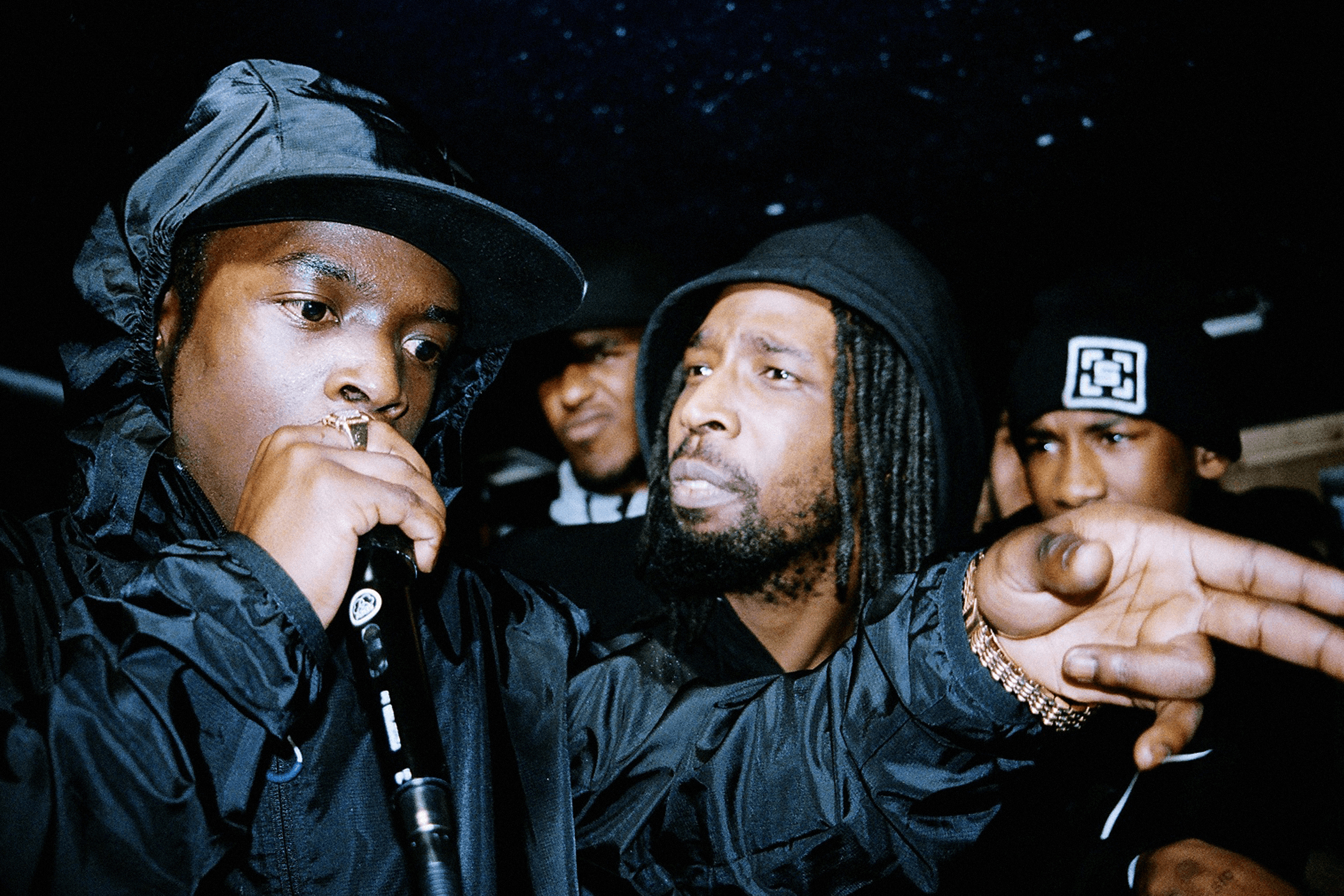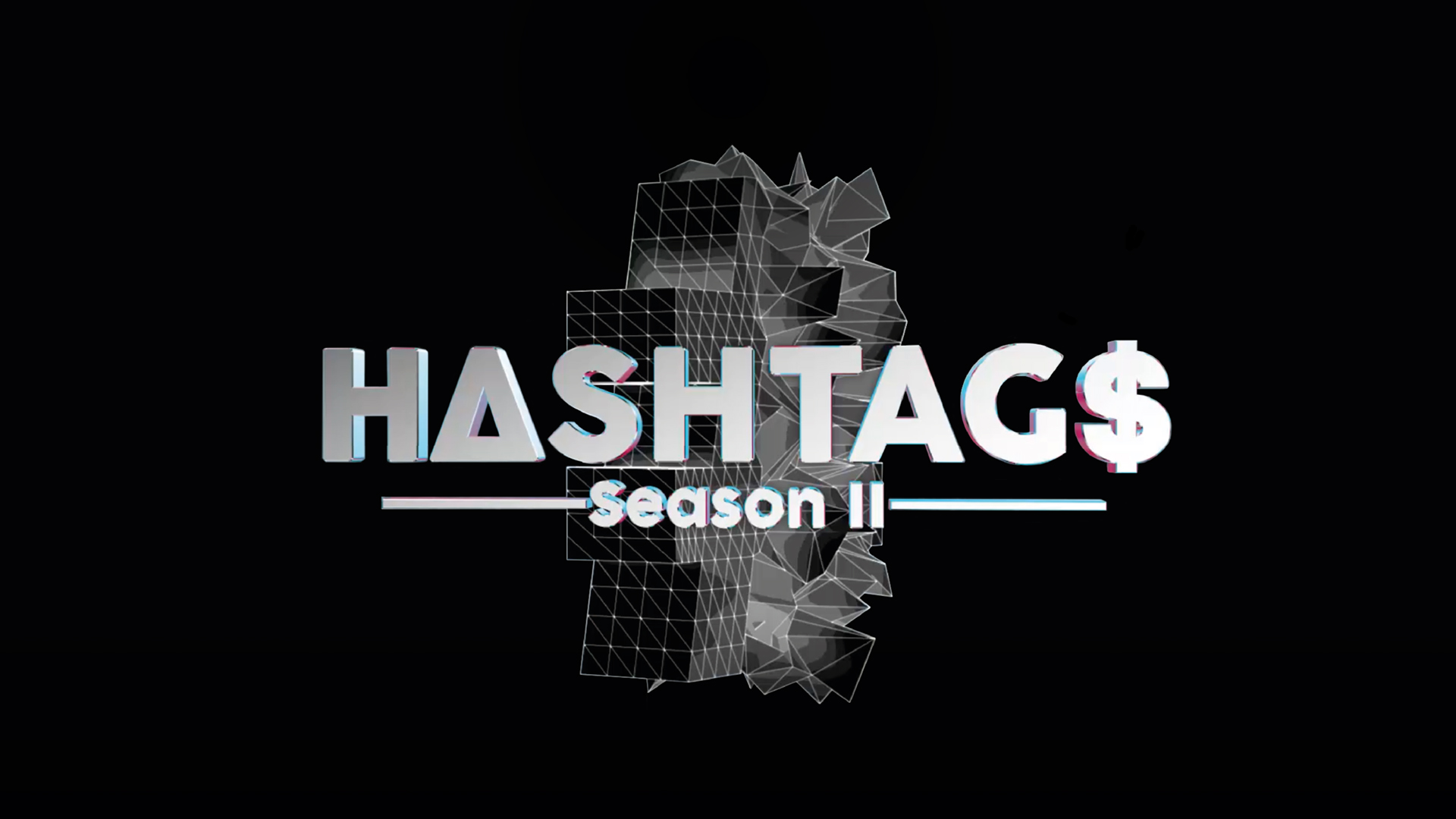What Is #Grime? Learn More in H∆SHTAG$, Season II
Dan Hancox explores the London-centric roots and reinvention of grime
Grime emerged from a world with big visions but narrow horizons. The claustrophobic and densely populated landscape of inner London, peppered with high-rise towerblocks and beset by hardship and petty crime, helped create a sound that was abrasive and unpredictable, as if it was bashing against the sides of a cage. But as futuristic and alien as the early creations of legendary producers and MCs like Wiley and Dizzee Rascal might have sounded then – and still sound now – they didn’t drop unannounced out of the grey London skies.
When grime’s once-underground parent genre UK garage came to dominate the British charts around 2000 and 2001, it did so with a split personality: of syrupy-sweet pop hits from the likes of Craig David, and the gangster machismo of the controversial So Solid Crew, who attracted opprobrium from the British tabloids for seeming to glamorise violence (and occasionally, attracting it to their shows).
The first grime kids clearly followed in the latter path, a product of the uniquely British, almost uniquely London-centric tradition that blended the influence of Jamaican reggae and the acid house revolution of the late 1980s – a blend that had fostered the equally explosive and avant-garde dancefloor sounds of ragga, jungle, drum & bass and UK garage before it in the 1990s. In the new millennium, garage turned dark and bled into what would become grime.
Pirate radio stations of East London were fired up with teenage MCs from the tower-blocks, all taking turns for their frantic 15 seconds of fame on the mic while a DJ played minimalist, bass-heavy instrumental rhythm tracks underneath – usually produced by their schoolmates, equally young, self-taught musicians using cracked versions of basic software like FruityLoops on clunky home PCs their parents had bought them so they could do their homework.
At 140 BPM, with MCs spitting their lyrics at twice the speed of regular hip-hop, it was not quite dance music and not quite rap – but the pioneering and uncompromising spirit of foundational crews like Roll Deep and N.A.S.T.Y. Crew thrived precisely because they were happiest defining their own sound. Grime’s breakthrough moment came in the summer of 2003, even before the name had officially settled onto this new form of dark garage, when a teenage auteur by the name of Dizzee Rascal released his debut album Boy in da Corner. A few months later it would go on to win that year’s Mercury Prize, drawing the eyes of the British music industry and mainstream media towards this previously ignored part of the UK underground.
But it wasn’t this fleeting mainstream recognition that gave grime a name and reputation so much as its bubbling DIY scene – raucous raves and thrilling, one-of-a-kind pirate radio sets, recorded by zealous fans lucky enough to be inside the radius of the FM dial. In these early years thriving cottage industries sprung up, from the small-time cable TV station Channel U to independent DVD series like Risky Roadz, self-released CD mixtapes and a flourishing white label dubplate scene.
It wasn’t long before the internet pulled the rug from beneath grime’s self-sufficient feet: the free availability of MP3 downloads started to undermine mixtape sales, the arrival of YouTube scuppered the DVD magazines and the London record shops that had been vital meeting points (and a vital source of sales for kingpins like Wiley) started to disappear. On top of this, a policing strategy that had always been suspicious of young black Londoners having fun together hardened into the notorious Form 696, a piece of paperwork that unapologetically targeted particular ethnic minority groups and their music scenes – and the few remaining grime nights in London struggled to overcome this bureaucratic prejudice.
The late 2000s saw grime flounder and almost tail off altogether. People moved on with their lives, or switched to making electro-pop or rap (Skepta, Tinchy Stryder and Tinie Tempah), where they could actually get played on mainstream radio and have some hits, while some DJs started focusing more on dubstep (Plastician) or house (Perempay, Jon E Cash), where they could secure some live bookings. But for a few true believers, an epiphany was just around the corner.
Artists like Lethal Bizzle had tried collaborating with rock bands and playing rock festivals, but as soon as the internet offered him the opportunity to be more true to himself, he seized upon it, using social media to connect straight with his fans and rediscovering the spirit of his 2004 hit (and grime anthem) “Pow!” He would become a pioneer of this new, social media-enabled independence, building up a huge following via platforms like Snapchat and selling his Dench clothing line (and his records) without major label support.
Grime’s renaissance started as a slow trickle but became a flood after 2014, when Skepta’s seminal track “That’s Not Me” was released. After several years of making Ibiza-inflected electro pop, it was a kind of public epiphany bordering on a confession: Skepta realised this wasn’t the music that made him pick up a mic in the first place, and it wasn’t making him happy. While the track garnered a huge public reception, it was the “That’s Not Me (All-Star Remix)” which really captured grime’s lost (and much missed) spirit: six MCs from different crews, each with their own unique but equally devastating styles, passing the mic for the most exhilarating quick-fire lyrical showdown you could imagine.
“That’s Not Me” marked the crest of a new wave that would sweep all before it. The last two years have seen the emergence of new artists who were still in primary school when Dizzee Rascal won the Mercury Prize, MCs who know their history but have taken the style to entirely new heights. Alongside the likes of AJ Tracey, Jammz, Big Zuu and their more rap-orientated brethren Dave, J Hus and Krept and Konan, you have the most obvious avatar for the grime renaissance, 23-year-old Stormzy, who has clocked 45 million YouTube views with a casually delivered freestyle in a local park, the glorious “Shut Up” (delivered over a classic 2004 instrumental, “Functions on the Low”).
For a long time grime has been pronounced dead by snide media commentators – and even, after a while, by the people who made it thrive the first time. There’s no shame in that – music and people will always move on – but all the pronouncements of grime’s demise turned out to be premature. As Stormzy said on his 2015 breakthrough track “Know Me From”: “If grime’s dead then how am I here?”

